Chapter 1 Dachgeschoss
第1章 ダッハゲショッス
第1章 ダッハゲショッス
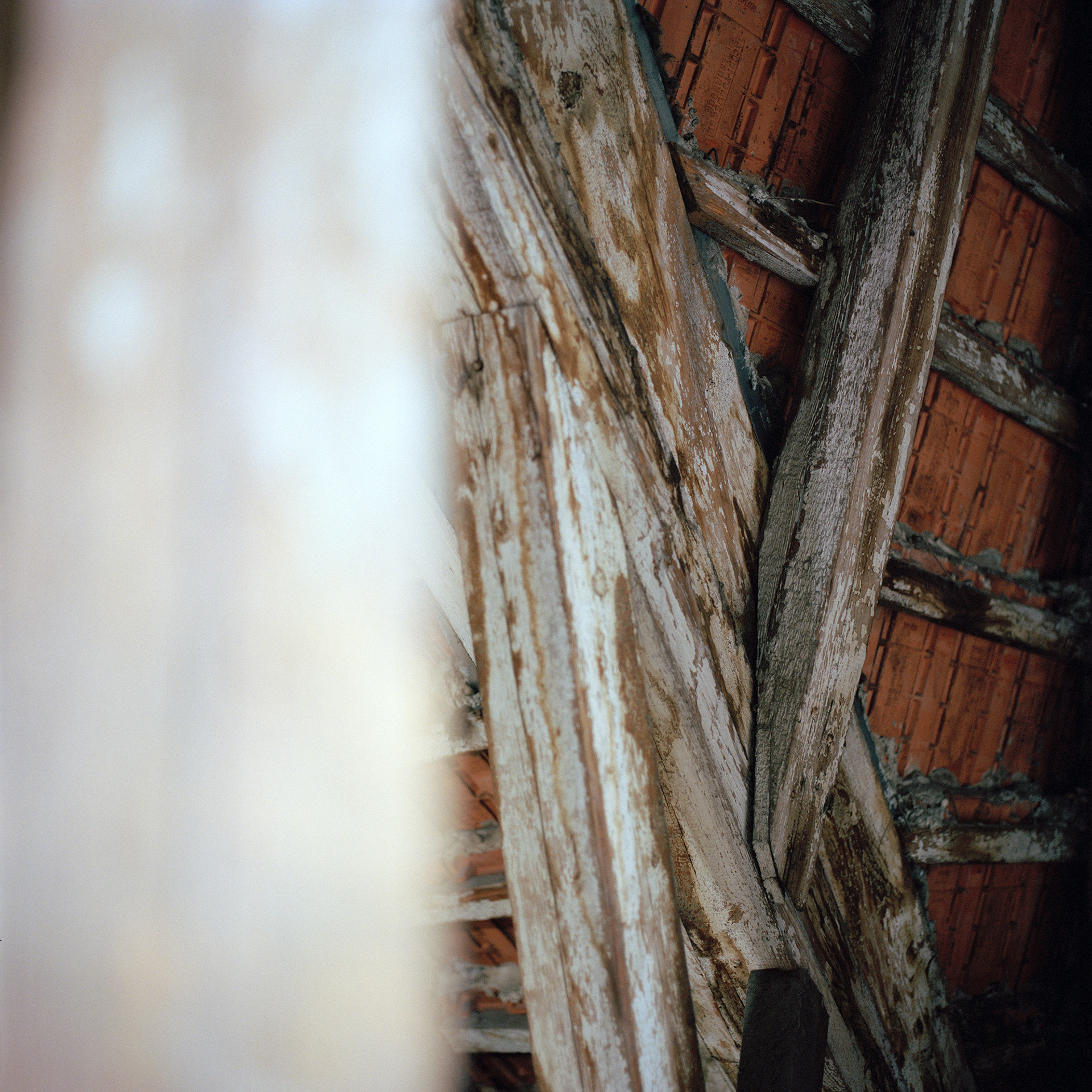
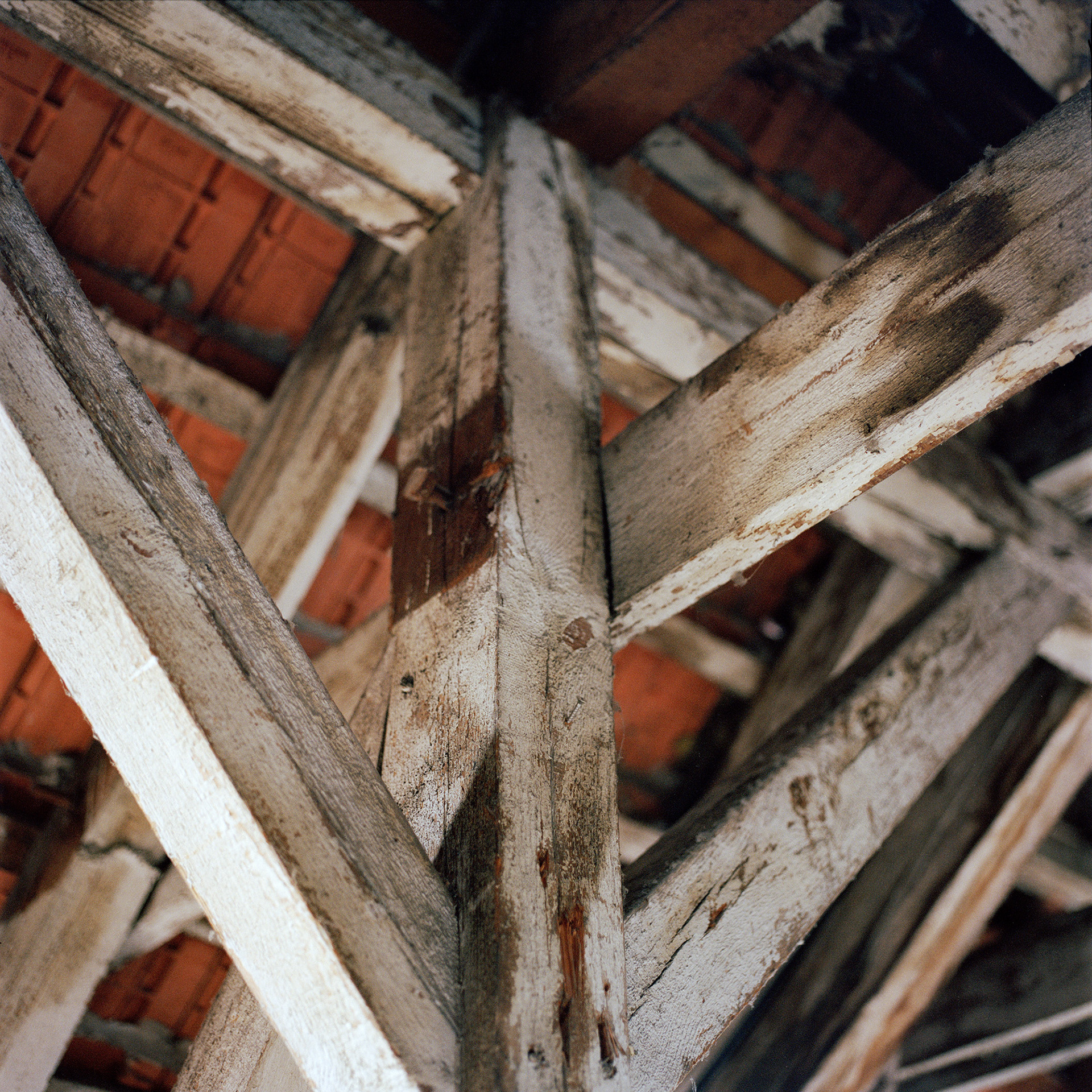
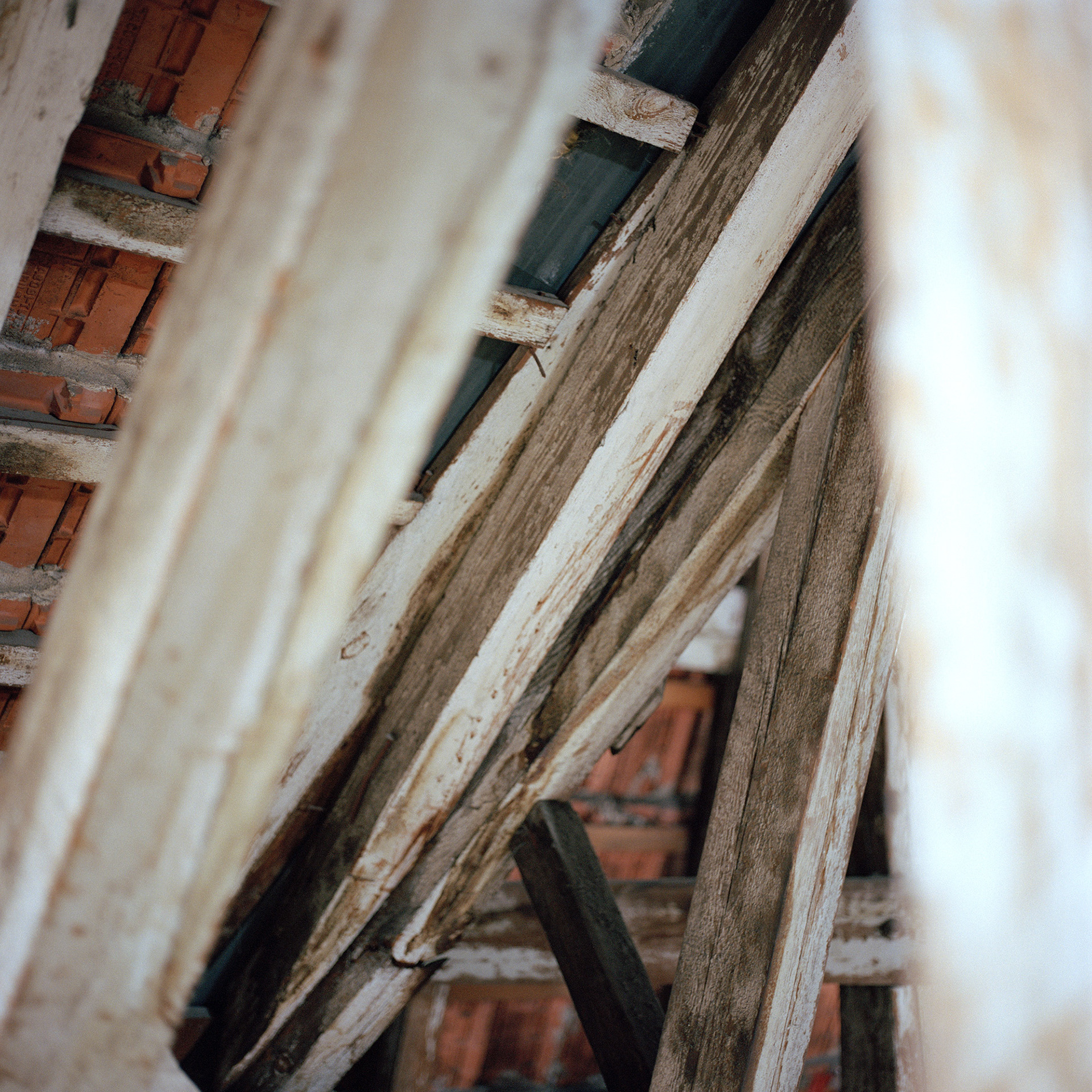
Chapter 2 Change Nothing
第2章 何も変えてはならない
第2章 何も変えてはならない
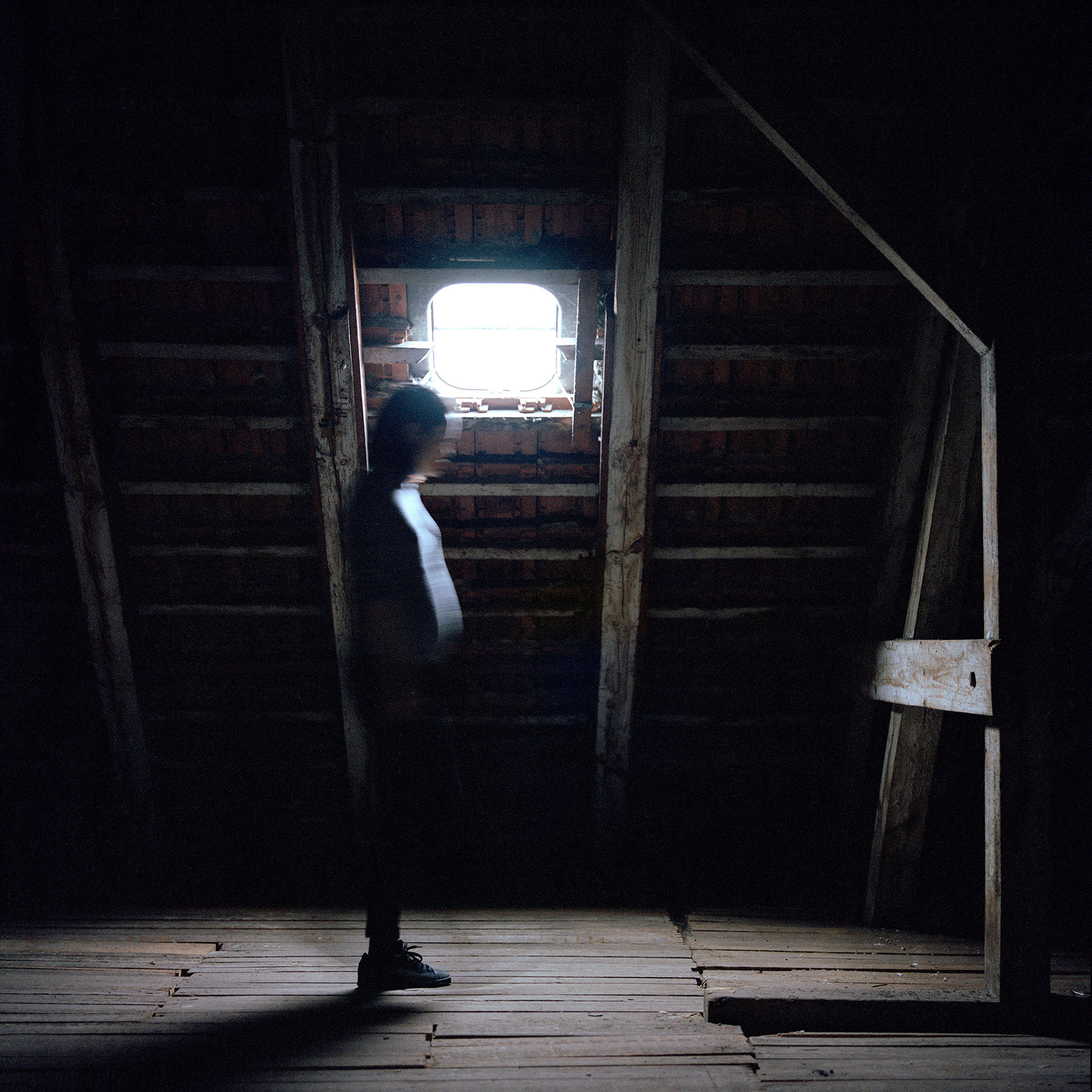
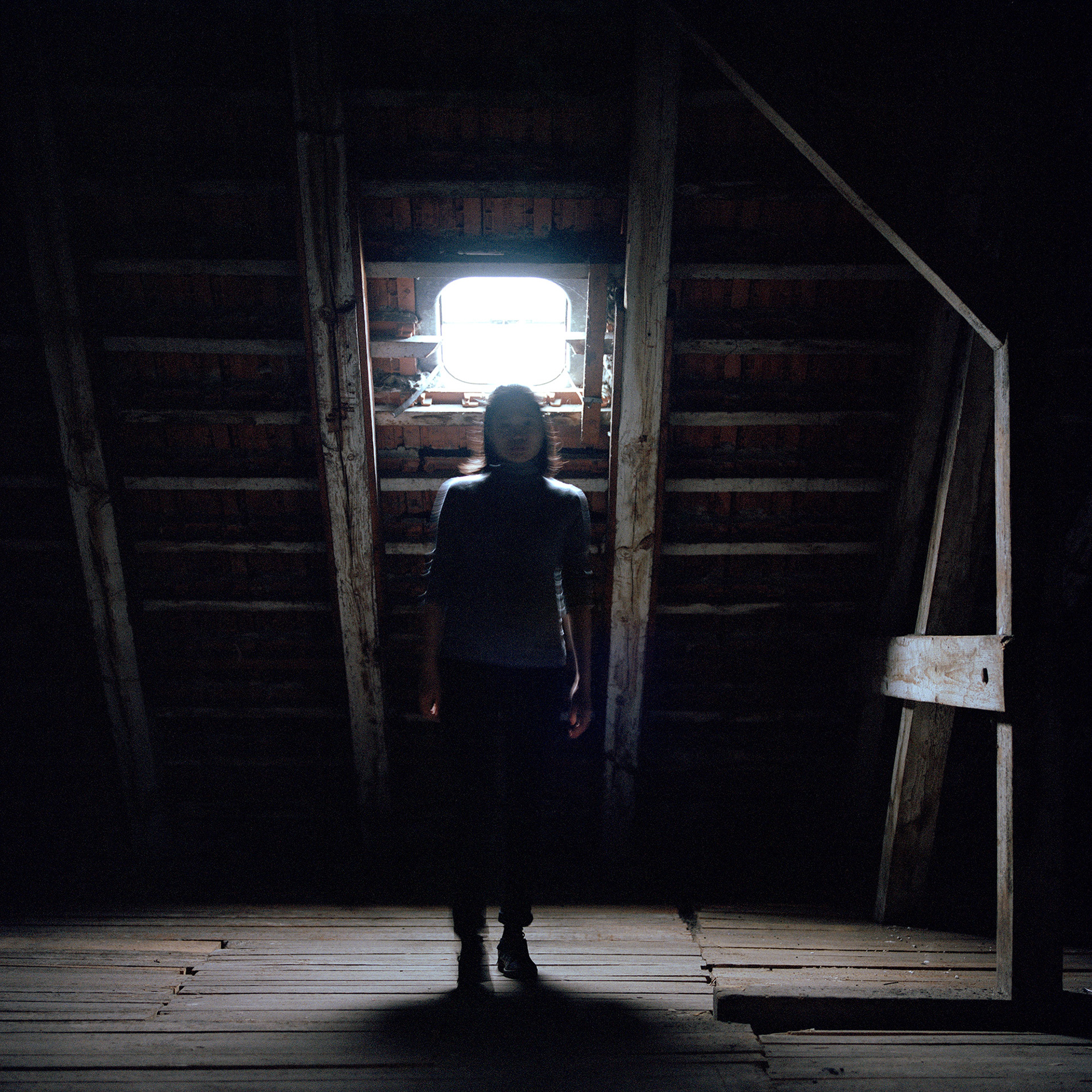
Chapter 3 The landscape as (supposedly) seen by neighbors
第3章 過去の隣人が見た(であろう)風景
第3章 過去の隣人が見た(であろう)風景

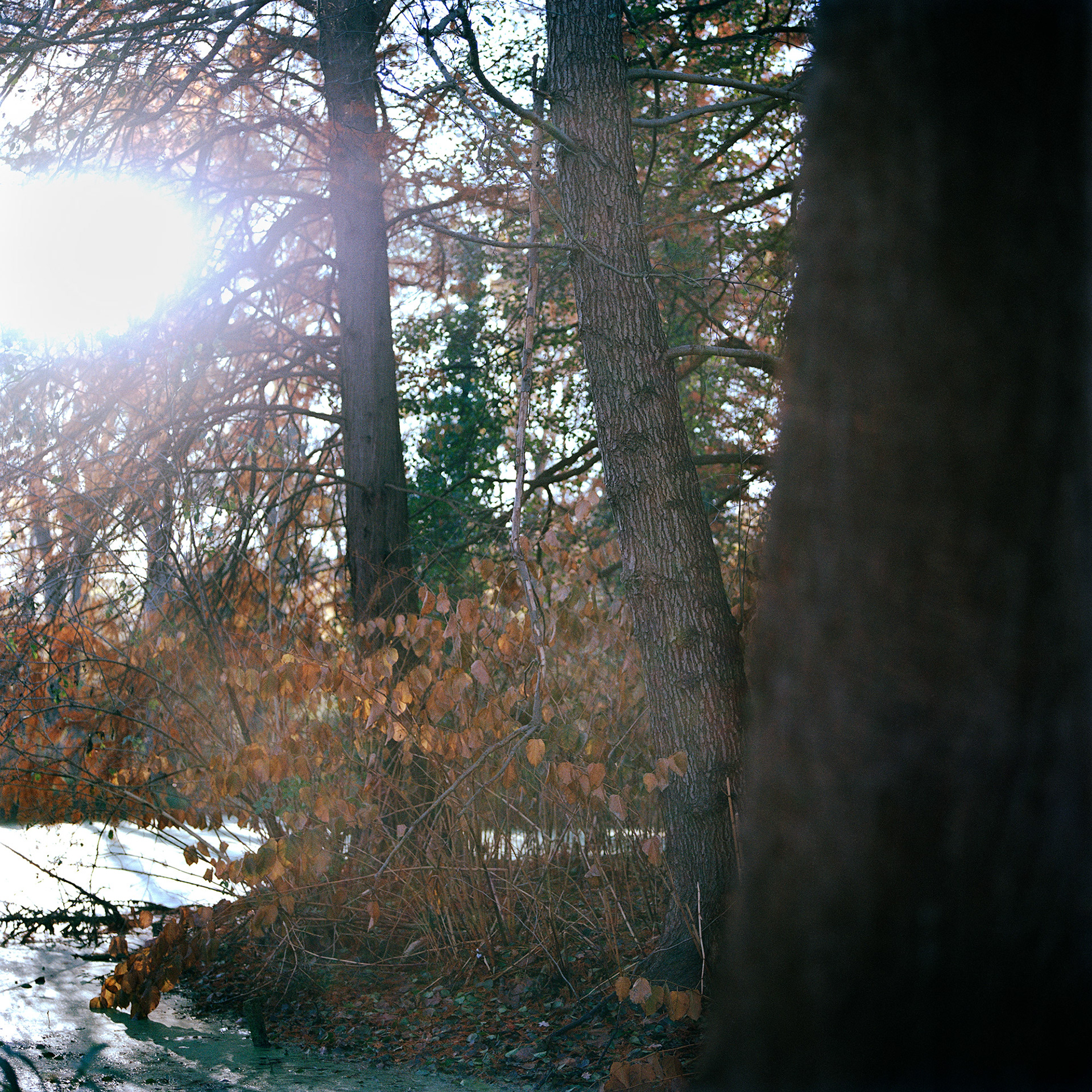
A shadowy room with pillars lined up like in a thick forest - an attic. A view that is declared superfluous by modernisation, but is retained in this project, and thus, raises social questions for people living in Berlin today from an artistic point of view. The following text is the project concept.
In the buildings of Berlin, attics often remain undiscovered worlds. Rarely visited by neighbors, these spaces serve, if at all, simple tasks like drying laundry. However, in recent years, the saying „There's, still room at the top" has gained significance, especially in Berlin with its rapidly growing population. This has led to the emergence of luxurious penthouse apartments and rooftop terraces in the otherwise empty and dusty roofs. With „Thick Forest of Dachgeschoss," Berlin-based artist Yuko Nakajima dedicates herself to her own residence, which itself has undergone a transformation.
Through a series of three chapters, she captures the changes within her attic. Once a dim place, it now appears like a dense forest with its series of pillars, gradually giving way to the new. Her camera adeptly depicts the artifacts exposed or discarded during the process of modernization - indoors and outdoors, light and shadow, suspended dust and flowing time, memories, and traces left by people.
She integrates the concept of the audience as neighbors into these contemplations. As viewers move through the hotel room, their shadows overlap with the projection, transforming them into figures of the neighborhood. In its tranquility and thoughtfulness, „Thick Forest of Dachgeschoss" stimulates questions about community, sharing living spaces, and being neighbors over decades. The once-private dwelling becomes a site of hospitality, while the attic turns into a blank canvas where past and present communal practices can intertwine, though in the face of diminishing open spaces.
In the buildings of Berlin, attics often remain undiscovered worlds. Rarely visited by neighbors, these spaces serve, if at all, simple tasks like drying laundry. However, in recent years, the saying „There's, still room at the top" has gained significance, especially in Berlin with its rapidly growing population. This has led to the emergence of luxurious penthouse apartments and rooftop terraces in the otherwise empty and dusty roofs. With „Thick Forest of Dachgeschoss," Berlin-based artist Yuko Nakajima dedicates herself to her own residence, which itself has undergone a transformation.
Through a series of three chapters, she captures the changes within her attic. Once a dim place, it now appears like a dense forest with its series of pillars, gradually giving way to the new. Her camera adeptly depicts the artifacts exposed or discarded during the process of modernization - indoors and outdoors, light and shadow, suspended dust and flowing time, memories, and traces left by people.
She integrates the concept of the audience as neighbors into these contemplations. As viewers move through the hotel room, their shadows overlap with the projection, transforming them into figures of the neighborhood. In its tranquility and thoughtfulness, „Thick Forest of Dachgeschoss" stimulates questions about community, sharing living spaces, and being neighbors over decades. The once-private dwelling becomes a site of hospitality, while the attic turns into a blank canvas where past and present communal practices can intertwine, though in the face of diminishing open spaces.
二段階の勾配柱が連なる‘‘森’'のような美しいDachgeschossの空間と、現代化過程において捨象されたものを記録した本プロジェクトは、ベルリンで今を生きる人たちに芸術的側面から社会的問題を写真で問いかける作品である。
ベルリンのアパートでは、屋根裏部屋はしばしば未知の世界となる。隣人が訪れることはめったになく、洗濯物を干すのがせいぜいだ。しかし近年、特に人口が急増しているベルリンでは、「まだ上に行く余地がある」という言葉が重要視されるようになった。その結果、豪華なペントハウス・フラットやルーフ・テラスが、何もない埃っぽい屋上に出現している。ベルリンを拠点に活動するアーティスト、中島ゆう子は、『ダッハゲショッスの森』で、自身の住居と屋根裏部屋にテーマに作品制作を行った。
3章からなるシリーズを通して、中島は自身の屋根裏部屋の変化を印象的にとらえている。かつては薄暗い場所であった屋根裏部屋は、彼女には鬱蒼とした森がゆっくりと新しいものへと変わっていくように見える。内部と外部、光と影、浮遊する埃と流れる時間、人々の記憶と痕跡など、近代化の過程で露出したり廃棄されたりした遺物を、彼女のカメラは巧みに捉えている。
第1章「ダッハゲショッス」は消えゆく屋根裏部屋の記録であるが、第2章「何も変えてはならない」では、作家はこの場所を劇場として想像し、住人や家族の連続性を表現している。第3章「隣人が見た(と思われる)風景」では、屋根裏部屋の内外で過去に隣人たちが経験したことをロマンチックに表現している。彼女は自問する:「自分より前にこの家に住んでいたのは誰だろう?誰がこの屋根裏部屋を歩き回っていたのか?屋根裏部屋はどんな目的で使われていたのか?」
彼女は、このような考察の中に、隣人としての鑑賞者の概念を組み込んでいる。展示空間を歩くと、観客の影が映写と重なり、隣人の姿に変わる。その静けさと思慮深さにおいて、『ダッハゲショッスの森』は、コミュニティ、生活空間の共有、数十年にわたる隣人関係への疑問を刺激する。かつては個人的だった住居は、もてなしの場となり、屋根裏部屋は、過去と現在の共同生活が織り成す白いキャンバスに変貌していく。
ベルリンのアパートでは、屋根裏部屋はしばしば未知の世界となる。隣人が訪れることはめったになく、洗濯物を干すのがせいぜいだ。しかし近年、特に人口が急増しているベルリンでは、「まだ上に行く余地がある」という言葉が重要視されるようになった。その結果、豪華なペントハウス・フラットやルーフ・テラスが、何もない埃っぽい屋上に出現している。ベルリンを拠点に活動するアーティスト、中島ゆう子は、『ダッハゲショッスの森』で、自身の住居と屋根裏部屋にテーマに作品制作を行った。
3章からなるシリーズを通して、中島は自身の屋根裏部屋の変化を印象的にとらえている。かつては薄暗い場所であった屋根裏部屋は、彼女には鬱蒼とした森がゆっくりと新しいものへと変わっていくように見える。内部と外部、光と影、浮遊する埃と流れる時間、人々の記憶と痕跡など、近代化の過程で露出したり廃棄されたりした遺物を、彼女のカメラは巧みに捉えている。
第1章「ダッハゲショッス」は消えゆく屋根裏部屋の記録であるが、第2章「何も変えてはならない」では、作家はこの場所を劇場として想像し、住人や家族の連続性を表現している。第3章「隣人が見た(と思われる)風景」では、屋根裏部屋の内外で過去に隣人たちが経験したことをロマンチックに表現している。彼女は自問する:「自分より前にこの家に住んでいたのは誰だろう?誰がこの屋根裏部屋を歩き回っていたのか?屋根裏部屋はどんな目的で使われていたのか?」
彼女は、このような考察の中に、隣人としての鑑賞者の概念を組み込んでいる。展示空間を歩くと、観客の影が映写と重なり、隣人の姿に変わる。その静けさと思慮深さにおいて、『ダッハゲショッスの森』は、コミュニティ、生活空間の共有、数十年にわたる隣人関係への疑問を刺激する。かつては個人的だった住居は、もてなしの場となり、屋根裏部屋は、過去と現在の共同生活が織り成す白いキャンバスに変貌していく。